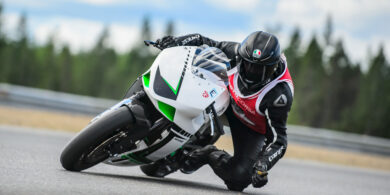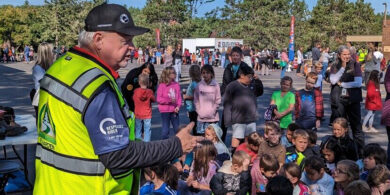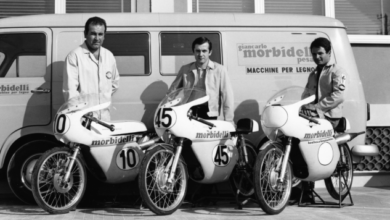Trying to rise to new public heights – April 24, 2006
Kary Krahel, manager for Montesa Motosports, knows all too well the obstacles facing trials bike manufacturers and their U.S. importers when trying to convince a dealer to carry their product.
“In the past, many dealers had never heard of trials bikes,” Krahel told Powersports Business from his Oregon City, Ore., office. “And we’d really have to explain what it was. These days more and more dealers understand what they are. They’re familiar with it, and see trials as an extreme sport and not just old school with a bunch of guys riding around in the woods. Relatively speaking, trials is a little more mainstream. It’s not full-bore (like AMA Supercross) but dealers know what trials is, and that’s encouraging.”
While it is encouraging for Montesa and the four other major importers of trials bikes in the United States — Beta, Gas Gas, Scorpa and Sherco — the image perceived by the mainstream motorcycle community, and the dealers who allocate their buying power based on consumer demand, is anything but.
To the uninitiated, motorcycle trials riding is negotiating man-made and natural obstacles with the goal of not touching the ground with the rider’s foot. The act itself can be a slow and methodical process requiring intense concentration and balance, but in competition quickness and speed play a factor: tiebreakers are determined by elapsed time. To witness an experienced trials rider defy gravity and explode up a near vertical 10-foot rock slab with a burst of torque and power is truly a sight to behold. Subsequently the crashes that come with these daredevil acts when things don’t go as planned can be just as jaw-dropping.
Reigning U.S. National Trials Champion Geoff Aaron recently claimed a double win at rounds one and two of the NATC/AMA National Trials Series at Holbrook, Ariz. Aaron, a ERE/Gas Gas sponsored rider, is in pursuit of an unprecedented 10th national title this year, a feat arguably rivaling motocross legend Ricky Carmichael. But few outside the relatively small circle of trials riding fans and competitors have ever heard of Aaron, much less seen him. There’s no TV coverage on Speed, glossy mainstream magazine ads on grocery store stands or groupies clamoring to sign the next great star. And that in turn creates a roadblock, not unlike the one trials riders face in competition, for prospective dealers looking to get the most out of their money and floor space for the “sure thing,” specifically motocross and off-road bikes and ATVs.
But it’s changing, albeit slowly.
Dale Malasek of Gas Gas says most dealers agree to carry one or two bikes on the floor even if they’re not in a popular area for trials competitions, and more if they’re in states with heavy emphasis on organized events, like Colorado, the Midwest, California, New England and Washington state.
Malasek said Gas Gas has approximately 180 dealers in the U.S. and an estimated 70 percent of the U.S. trials bike sales. Sherco lists near 75 dealers nationwide, Beta has more than 60, Montesa has roughly 50 and Scorpa has less than 40.
With the limited dealer network, the matter of replacement parts and warranty work is sure to be an issue. All five major U.S. importers say they have adequate warehouse supplies and are quick to respond to dealer and rider needs.
Montesa, which is majority owned by Honda, has taken advantage of Big Red’s buying power and vast pipeline of replacement parts via their 180 dealers.
Gas Gas says they have the upper hand on the competition thanks to its “one new model per year” business plan, which allows them to concentrate on one bike at a time in terms of warehouse supplies, and that they have five years’ worth of anything and everything related to their bikes.
Asked what needs to be done in order for trials manufacturers to be represented in stronger numbers on showrooms, Malasek said more general riders have to be made aware of the sport and how much fun and exercise it is to ride a trials bike.
“In other words, more advertising,” he said.
Malasek said the number of trials bikes in the United States is growing not only because trials is more recognizable, but because of land closure issues. Trials bikes are quiet and more acceptable in many places that a motocross bike may not be.
“And usage is changing a lot, too,” adds Krahel of Montesa Motosports. ”Guys are using trials bikes for adventure riding instead of purely for competition. More and more buyers are coming from the Rockies and places like Utah, Idaho and Montana where trials competition isn’t huge.”
Mike Thuleen, owner of Boise, Idaho-based The Trials Source, agrees. His small shop on the outskirts of town sells parts and accessories for the five major U.S. brands of trials bikes to the area’s small yet diehard contingent of trials fanatics. Thuleen says he’s seen an increase in crossover bike buyers. But he’ll be the first to admit that he’s not getting rich selling a niche product to a small pool of trials customers.
“New entrants are apprehensive to put out $6K-$8K for a new bike,” Thuleen says. “They want to spend $2,500 and play, so (new trials riders) are more willing to go the used route on the first purchase. The point that trials is growing in areas where trials is already popular is correct and logical; where it isn’t, it is still very small.” psb




